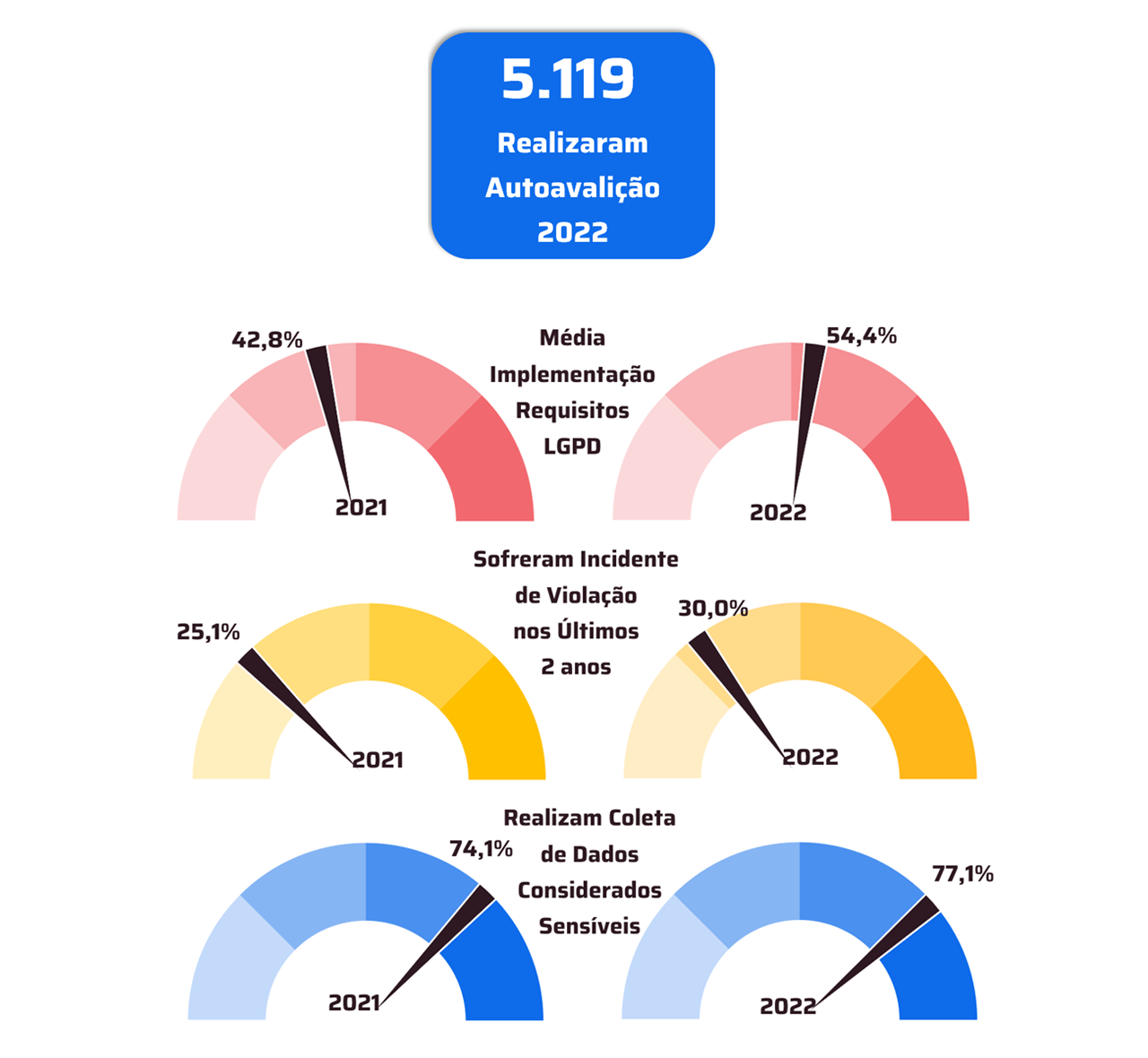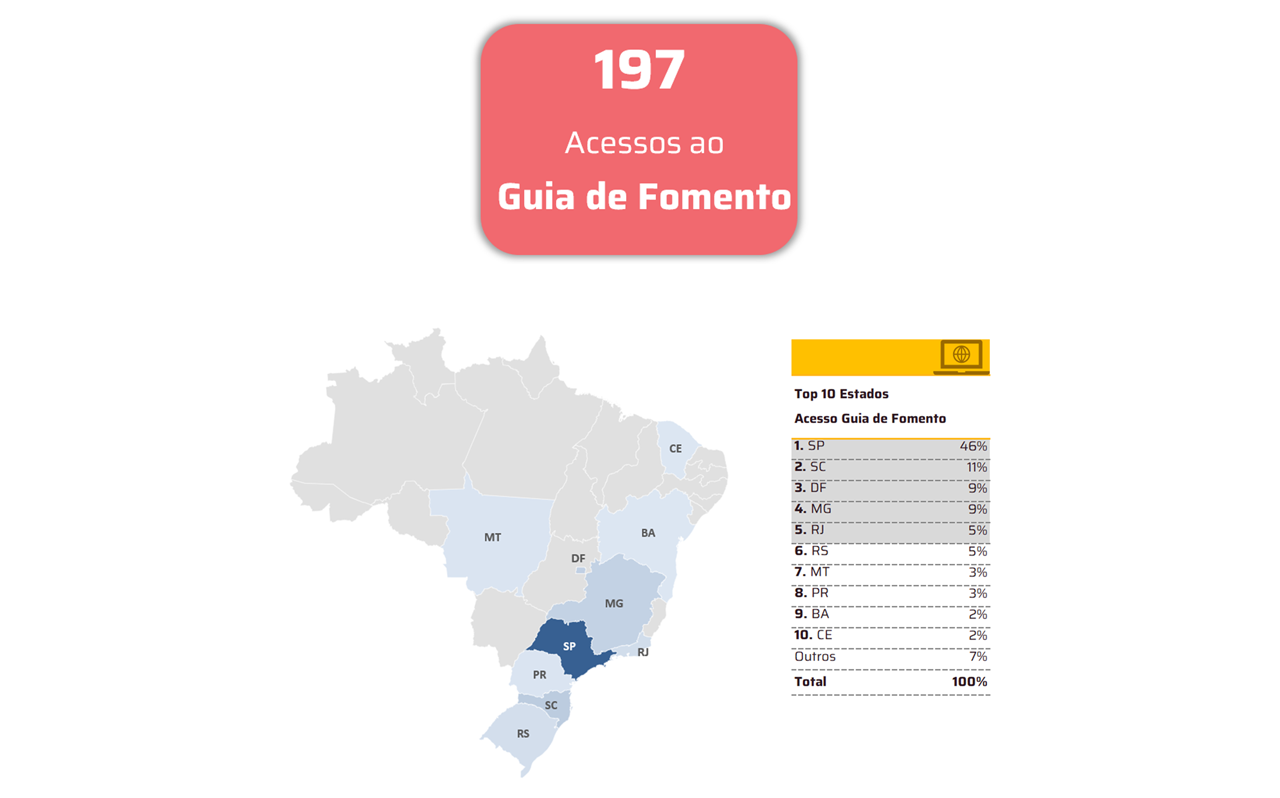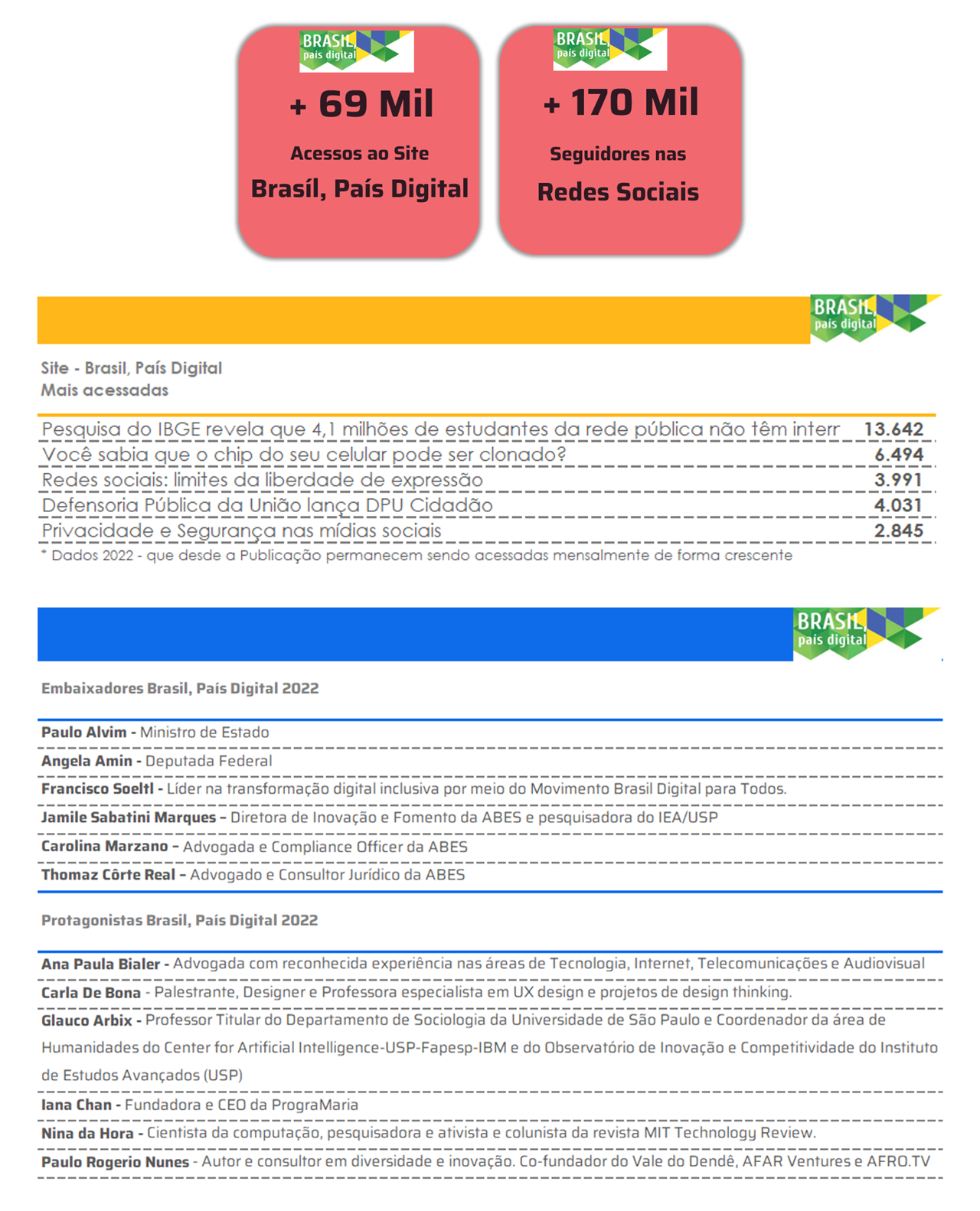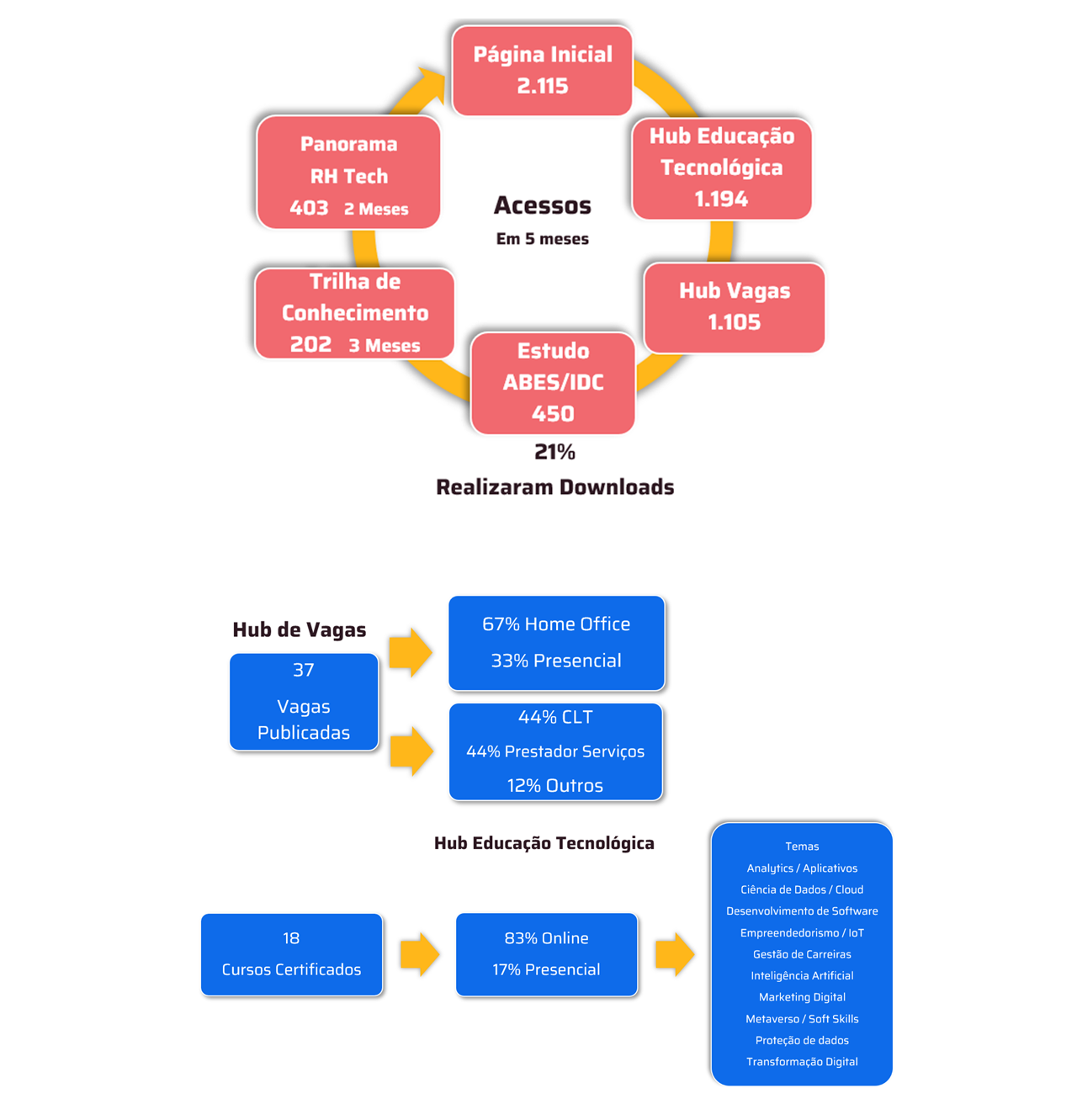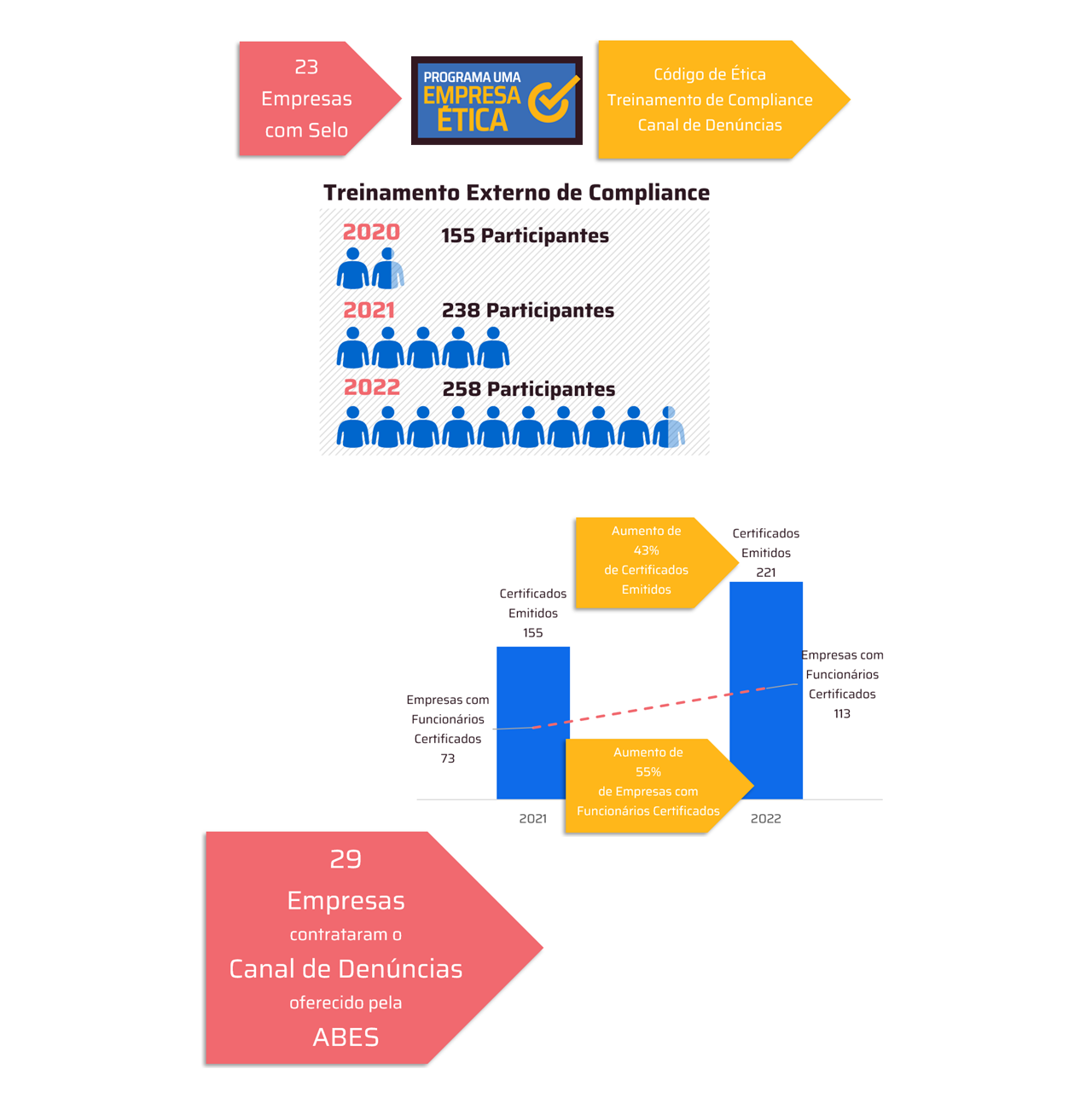Driving the digital economy: the role of data centers and Brazil's bets to lead in Latin America
 *By Luiz Felipe Vieira de Siqueira
*By Luiz Felipe Vieira de Siqueira
Data centers, or data processing centers, are physical facilities that constitute the essential pillars of contemporary digital infrastructure. They house servers, storage devices and networks, and are crucial for the massive processing and storage of digital data. In an era defined by the Information Society and the digital economy, in which digital information and the Internet are central, data centers support everything from online searches and banking transactions to advanced applications in Health, Agribusiness, Industry and Cities. With the explosion in demand driven by Artificial Intelligence (AI) and increasing digitalization, the need for data center infrastructure increases exponentially.
In this global context, Latin America has emerged as a “new frontier” for major investments in the data center sector, and Brazil stands out as a significant player.
The Northeast has established itself as a strategic hub for the installation of data centers, especially due to the abundance of renewable energy, such as wind power, and the proximity of submarine cables that guarantee high connectivity. Ceará is leading this movement, with billion-dollar projects, including a R$55 billion investment by Casa dos Ventos and negotiations between the state government and Chinese companies that could inject up to R$50 billion into the region. ByteDance¹ is evaluating a large project in the Pecém port complex, while other companies, such as V.tal and Angola Cables, are also investing in the capital of Ceará. HostDime plans to build a new TIER IV edge data center in John Person².
Rio de Janeiro is highlighted with the ambitious Rio AI City project, developed by Elea Data Centers in the region of Olympic Park³, which will have an initial capacity of 1.5 GW and could reach 3.2 GW. The project is supported by the municipality and seeks to transform the Olympic Park region into a technology hub. There are also studies to bring investments to Porto do Açu.
São Paulo continues to be the largest data center hub in the country, attracting giants such as Elea, ODATA and Tecto, which are expanding their operations. Among the projects of note are a R$5 billion investment by Elea in São Bernardo do Campo and a hyperscale project by Tecto in Santana de Parnaíba, which will have 100% renewable energy and an initial investment of US$ 1 billion⁴.
O Rio Grande do Sul⁵ also fits into the scenario, with Scala Data Centers investing R$3 billion in the construction of the Scala AI City in Eldorado do Sul, with the potential to reach 4.7 GW. Paraná, Distrito Federal and Minas Gerais are also mentioned as strategic regions, with the city of Maringá trying to attract a large data center through the creation of an Export Processing Zone (ZPE).
Fiber optic infrastructure, regulatory challenges and tax incentives are key elements in enabling these investments, and the growth of the data center sector in Brazil reflects an accelerated digital transformation and an increased demand for data processing and storage.
Despite its potential and strategic advantages, Brazil faces significant challenges in fostering and expanding its data center sector. The main obstacle highlighted by the Mapping of the Brazilian Association for Industrial Development (ABDI) is the high cost of implementation (CAPEX) and operation (OPEX), which are considerably higher than those of neighboring countries in Latin America. In 2021, the CAPEX of a Tier 3 data center in Brazil was 25.9% higher than that of Chile and 52.6% higher than that of Argentina. The tax burden is cited as the most relevant factor for this difference, accounting for 23% of CAPEX and 27% of OPEX in Brazil, the highest regional rates. The complexity of the Brazilian tax system aggravates this situation, combined with the high cost and difficulty of importing essential equipment. These high costs can make it more advantageous for Brazilian companies to process their data abroad, impacting the country's international competitiveness (ABDI, 2023).
In addition to tax and import costs, data centers require a robust energy and cooling infrastructure. Electricity is the largest operating cost, and the growing demand for AI servers requires hundreds of megawatts, increasing consumption and costs. Cooling is a constant challenge to ensure the efficiency and longevity of equipment, leading to the search for technologies such as liquid cooling. The search for renewable energy, although an objective to reduce emissions, also represents a necessary investment. Another important challenge is the development of qualified human capital for the complex operation and maintenance of these facilities.
To overcome these obstacles and capitalize on the country’s potential, the Brazilian government has proposed a set of public policies aimed at attracting significant investment to the sector. The core of this strategy is the National Data Center Plan, an initiative that seeks to accelerate the expansion of infrastructure and attract approximately R$2 trillion in investment over ten years. The main mechanism of this plan is the Special Regime for Attracting Data Centers (Redata).
Redata is a special tax regime being developed by the federal government, the purpose of which is to reduce the burden on investments in the implementation and expansion of data centers in Brazil. It provides for the exemption or reduction of federal taxes on the purchase and import of equipment essential for construction, modernization and operation, such as IPI, PIS, Cofins and Import Tax. This measure aims to make the construction and expansion of data centers more financially attractive, functioning as an anticipation of the effects of tax reform for the sector.
In exchange for the tax benefits granted by Redata, investors must comply with strategic requirements for national development:
Sustainability: Requires the adoption of rigorous environmental practices, such as the use of renewable and clean energy (preferably solar or wind), high energy and water efficiency (seeking “zero water”), circularity and carbon neutrality. This aligns the sector’s development with crucial environmental objectives.
Domestic Capacity Reserve: At least 10% of the capacity of data centers benefiting from Redata must be offered in the Brazilian market for companies, research, universities or public policies. The donation of this capacity counts double, with the aim of ensuring that part of this infrastructure directly benefits the local economy and innovation.
Contribution to Research: Redata participants must allocate 2% of their revenue to the National Fund for Industrial and Technological Development (FNDIT), aiming to promote specific research for the sector.
Thus, Redata is not limited to attracting investments by reducing costs, but seeks to direct them so that they are sustainable and contribute to technological development and the Brazilian digital economy.
In addition to Redata, there is a need for integrated public policies and collaboration models to strengthen the data center sector in Brazil. The National Cybersecurity Policy (PNCiber) plays a key role in establishing a solid regulatory framework, ensuring legal certainty and protection against digital threats. Its incorporation into strategies to promote the sector reinforces Brazil’s position as a reliable environment for investments in technological infrastructure.
Other proposed measures and promotion models include:
- Strategic Dialogue and Governance: The creation of an Interministerial Committee to facilitate dialogue with the private sector and strategic planning.
- Other Tax Incentives: In addition to Redata, the assessment of other tax reductions, such as taxes on energy, IPTU and imports.
- Public Financing: Offering dedicated credit lines, such as the existing R$2 billion from BNDES, and other forms of tax credit.
- Shared Infrastructure and Facilitated Licensing: The creation of “data center parks” or special economic zones (similar to the EPZs mentioned in the Northeast) with previously structured infrastructure (energy, water, connectivity) and simplified licensing processes. Inspired by international models and the Brazilian experience with technology parks, these parks aim to reduce uncertainties, costs and deadlines, making the country more attractive to large structures. Collaboration in the Triple Helix model (government, companies, universities) is seen as crucial to the success of these parks.
- Adapting World War II bunkers into data centers in Brazil is a promising alternative, taking advantage of their robust structure and strategic location in cities such as São Paulo and Rio de Janeiro. Decree 4,098 of 1944 required the construction of these shelters, many of which still exist and have been reused for other purposes. Converting these spaces can ensure high physical security and resistance to natural disasters, as long as they are modernized with adequate energy, refrigeration, and connectivity infrastructure. The documentary Cyberbunker: Crimes na Internet exemplifies this model in Germany, demonstrating its viability for digital operations. In Brazil, implementing this concept would require investments in technology, renewable energy, and connectivity to ensure its efficiency in the digital infrastructure market (NETFLIX, 2023; SEAERJ, 2022).
- Investment in Critical Infrastructure: Ensure public investment in energy networks, fiber optics and submarine cables to support the expansion of data centers.
- Regulatory Facilitation: Implement mechanisms to speed up licensing and ensure legal security for investments.
- Human Capital Development: Promote the provision of professional training courses and the adaptation of university curricula in partnership with institutions such as SENAI and universities, to train the necessary qualified workforce.
- Stimulating Demand: Encourage government digitalization and the adoption of cloud services in the public and private sectors, generating demand for data centers installed in the country.
- Cybersecurity: Ensure the protection of data centers within the framework of the National Cybersecurity Policy (PNCiber).
Overcoming challenges and harnessing Brazil’s potential in the data center market fundamentally depend on collaboration between the public and private sectors. It is necessary to combine private capital and expertise with the state’s capacity to provide infrastructure, regulate, incentivize and generate demand. Initiatives such as the tax relief conditioned by Redata, the facilitation of processes, investments in infrastructure and personnel training, and ongoing dialogue are manifestations of this essential collaboration for Brazil to capitalize on its potential and strengthen its global position in the era of Artificial Intelligence.
*Luiz Felipe Vieira de Siqueira is a lawyer, researcher at Think Tank ABES, PhD student in Innovation & Technology – PPGIT UFMG and partner at Privacy Point.
Notice: The opinion presented in this article is the responsibility of its author and not of ABES - Brazilian Association of Software Companies
Article originally published on the Connected Smart Cities website: https://portal.connectedsmartcities.com.br/2025/06/11/data-centers-no-brasil-desafios-oportunidades-e-politicas-publicas-para-um-futuro-digital/
1. https://www.ecommercebrasil.com.br/noticias/bytedance-avalia-investimento-em-data-center-no-brasil-com-foco-em-energia-renovavel 2. https://www.datacenterdynamics.com/br/an%C3%A1lises/os-principais-projetos-de-data-centers-em-2025/ 3. https://convergenciadigital.com.br/mercado/elea-faz-data-center-verde-para-inteligencia-artificial-no-rio-de-janeiro/ 4. https://www.datacenterdynamics.com/br/an%C3%A1lises/os-principais-projetos-de-data-centers-em-2025/ 5. https://investnews.com.br/negocios/a-vez-do-brasil-nos-data-centers-empresas-colocam-bilhoes-em-campo-a-espera-da-explosao-da-ia/ References BRAZILIAN AGENCY FOR INDUSTRIAL DEVELOPMENT (ABDI). Data Center Mapping 2023. Brasilia, DF, 2023. NATIONAL BANK FOR ECONOMIC AND SOCIAL DEVELOPMENT (BNDES). BNDES launches R$2 billion line for data centers in Brazil. Brasília, DF, September 11, 2024. Available at: https://www.bndes.gov.br. Accessed on: May 12, 2025 BRAZIL. Ministry of Science, Technology and Innovation. PBIA forecasts R$500 million for green data centers that combine technology and sustainability. MCTI, February 20, 2025. Available at: https://www.gov.br/mcti/pt-br/acompanhe-o-mcti/noticias/2025/02/pbia-preve-r-500-milhoes-para-data-centers-verdes-que-aliam-tecnologia-e-sustentabilidade. Accessed on: May 10, 2025. BYTEDANCE. ByteDance evaluates investment in data center in Brazil with focus on renewable energy. Ecommerce Brazil, 2025. Available at: https://www.ecommercebrasil.com.br/noticias/bytedance-avalia-investimento-em-data-center-no-brasil-com-foco-em-energia-renovavel. Accessed on: May 13, 2025. DIGITAL CONVERGENCE. Elea builds green data center for artificial intelligence in Rio de Janeiro. Digital Convergence, 2025. Available at: https://convergenciadigital.com.br/mercado/elea-faz-data-center-verde-para-inteligencia-artificial-no-rio-de-janeiro/. Accessed on: May 13, 2025. CNN BRAZIL. In the global dispute for data centers, Brazil prepares tax incentives. Apr 28, 2025. Available at: https://www.cnnbrasil.com.br/economia/macroeconomia/na-disputa-global-por-data-centers-brasil-prepara-incentivos-fiscais/. Accessed on: May 12, 2025. NORTHEAST JOURNAL. Construction work on Casa dos Ventos' R$55 billion data center is expected to begin this year in Pecém, says Elmano. [sd]. Available at: https://diariodonordeste.verdesmares.com.br/negocios/obras-de-data-center-de-r-55-bilhoes-da-casa-dos-ventos-devem-comecar-neste-ano-no-pecemdizelmano-1.3611910. Accessed on: May 10, 2025. DATACENTER DYNAMICS. Top data center projects in 2025. DataCenter Dynamics, 2025. Available at: https://www.datacenterdynamics.com/br/an%C3%A1lises/os-principais-projetos-de-data-centers-em-2025/. Accessed on: May 11, 2025. FARIA, Adriana Ferreira de; HABER, Jeruza Alves; BATTISTI, Andressa Caroline De; DABROWSKA, Justyna; SEDIYAMA, Jaqueline Akemi Suzuki. Technology parks in Brazil: an analysis of the determinants of performance evaluation. International Journal of Innovation, São Paulo, v. 10, n. 1, p. 30-67, Jan./Apr. 2022. Available at: https://doi.org/10.5585/iji.v10i1.19456. Accessed on: May 10, 2025. INFOMONEY. Brookfield seeks partner for Ascenty as it eyes data center expansion in Brazil. InfoMoney, 2025. Available at: https://www.infomoney.com.br/business/brookfield-busca-socio-para-ascenty-de-olho-na-expansao-de-data-centers-no-brasil/. Accessed on: May 11, 2025. INVESTNEWS. Brazil's turn in data centers: companies invest billions in the field waiting for the AI explosion. InvestNews, 2025. Available at: https://investnews.com.br/negocios/a-vez-do-brasil-nos-data-centers-empresas-colocam-bilhoes-em-campo-a-espera-da-explosao-da-ia/. Accessed on: May 13, 2025. IT FORUM. Brazil leads Latam data centers. [sd]. Available at: https://itforum.com.br/noticias/brasil-lidera-data-centers-latam/. Accessed on: May 10, 2025. CASTELLS, Manuel. The network society. 11th ed. New York: Routledge, 2008. I THINK TECHNOLOGY. Growth of Data Centers in Brazil: Opportunities and Challenges. [sd]. Available at: https://www.penso.com.br/crescimento-dos-data-centers-no-brasil-oportunidades-e-desafios/. Accessed on: May 10, 2025. LOOK. Understand Haddad's R$2 trillion plan to attract data centers to Brazil. [sd]. Available at: https://veja.abril.com.br/economia/entenda-o-plano-de-r-2-trilhoes-de-haddad-para-atrair-data-centers-para-o-brasil/. Accessed on: May 10, 2025. ETZKOWITZ, Henry. The Triple Helix of University-Industry-Government Relations. Social Science Information, v. 42, no. 3, p. 293-337, Sep. 2003. DOI: 10.1177/05390184030423002. NETFLIX. Cyberbunker: Crimes on the Internet. Directed by Mark Wetzke. Germany, 2023. Available at: https://www.netflix.com. TS SHARA. The challenge of the Brazilian data center market. 2025. Available at: https://tsshara.com.br/blog/noticias/o-desafio-do-mercado-brasileiro-de-data-centers/. Accessed on: May 12, 2025.





